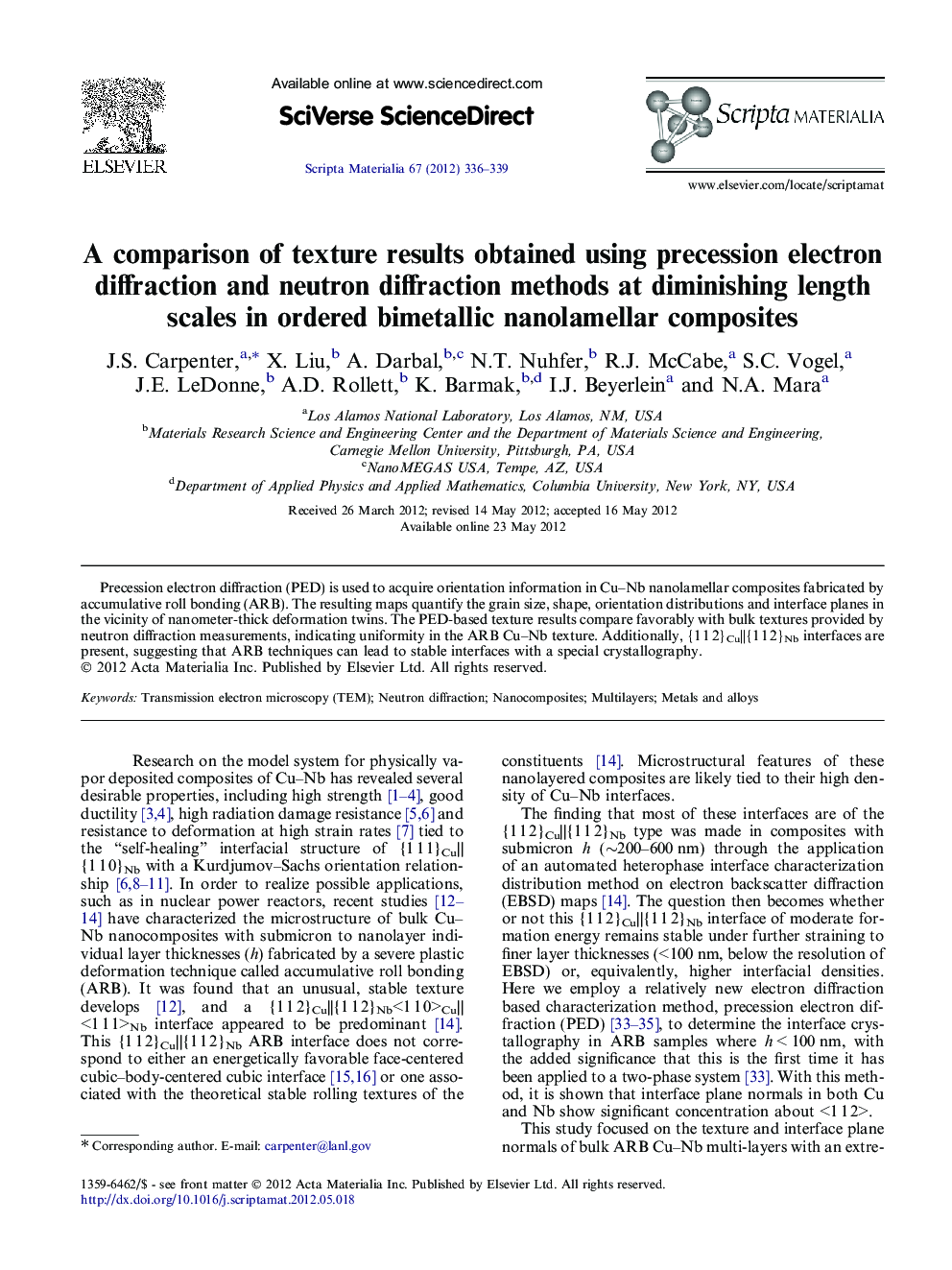| Article ID | Journal | Published Year | Pages | File Type |
|---|---|---|---|---|
| 1499124 | Scripta Materialia | 2012 | 4 Pages |
Abstract
Precession electron diffraction (PED) is used to acquire orientation information in Cu–Nb nanolamellar composites fabricated by accumulative roll bonding (ARB). The resulting maps quantify the grain size, shape, orientation distributions and interface planes in the vicinity of nanometer-thick deformation twins. The PED-based texture results compare favorably with bulk textures provided by neutron diffraction measurements, indicating uniformity in the ARB Cu–Nb texture. Additionally, {1 1 2}Cu||{1 1 2}Nb interfaces are present, suggesting that ARB techniques can lead to stable interfaces with a special crystallography.
Keywords
Related Topics
Physical Sciences and Engineering
Materials Science
Ceramics and Composites
Authors
J.S. Carpenter, X. Liu, A. Darbal, N.T. Nuhfer, R.J. McCabe, S.C. Vogel, J.E. LeDonne, A.D. Rollett, K. Barmak, I.J. Beyerlein, N.A. Mara,
